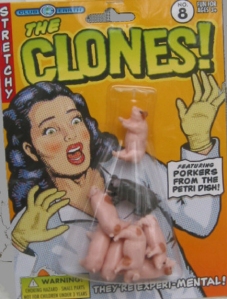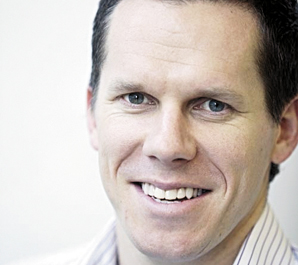Michael Wolff unleashed on the ultimate value of Facebook last week in a very powerful piece in MIT’s ‘Technology Review’ titled ‘The Facebook Fallacy’.
“Facebook is not only on course to go bust, but will take the rest of the ad-supported Web with it.”
The article is worth a read – and is similar in tone to what commentators like Bob Hoffman have been saying for the better part of 2 years. The piece is controversial by design. It is worth a read for anyone working in media or advertising. It raises questions that the industry needs to be discussing at a point where media and advertising appears to be addicted to self-harm.
However, the author isn’t another ill-qualified tech fanboy masquerading as a journalist like most tech media coverage. It’s Michael Wolff – a guy who has dedicated his entire professional life to media. Media and advertising are in his DNA – his parents worked in the industry – and he himself tried to make it big in the first rush of the dotcom boom with his own media company. In short, he is as qualified as any to deliver observations around the mechanics of the media industry.
This isn’t to say what he is saying is necessarily right or wrong – it’s just with his background it’s worth considering what he’s saying within this piece and why many of the issues have significant importance beyond the context of the article.
So what is he saying? Well … I took the following out of the piece and would be keen to hear your thoughts on these issues.
Facebook can’t match it’s IPO price and is overvalued
My knowledge of the share market is limited so it’s hard to comment here. The only observations I’ll make are, for one, the Facebook IPO was fully subscribed at $38 a share … so those people have to have thought it was worth the $100b valuation the company was seeking when doing the capital raise. Secondly, right now at $33 a share FB is trading at a multiple of 105 … most (not all) ‘mature’ companies trade anywhere between 10-20x. can the company sustain a valuation of $100b+ with earnings of $1b? Who knows … it really depends on the appetite of people who want to buy the stock. I am confident Facebook has significant opportunity for revenue growth on the horizon and is second only to Google in long term revenue potential online. The opportunity is there but the ad product right now isn’t. However, the ad product has evolved a lot over the past 5 years and will continue to.
“At the heart of the Internet business is one of the great business fallacies of our time: that the Web, with all its targeting abilities, can be a more efficient, and hence more profitable, advertising medium than traditional media.”
This is the big question – which has yet to be answered aside for Google. Wolff raises that the NY Times makes approximately $1,000 from every print sub … but is making less than $5 annually from every web user. FB makes about the same. Most ad funded web businesses are making somewhere between 1-6 dollars per user per annum regardless of scale. It raises the question – how can these companies grow if user numbers don’t grow and ad yields drop? Won’t lower yields mean lower extraction and ultimately impact revenues in a negative way? With media agencies obsessed to the point of distraction around lowering CPM (often out of context) publishers are going to find it hard to earn more money from their efforts. So whilst most web publishers are making around $5 per user per year, even the lowest performing FTA TV Network – Network 10 – is making revenues around $31 per year on every single person living in Australia.
“Network technology allows advertisers to more precisely locate and assemble audiences outside of branded channels.”
This is the issue with re-targeting. I guess needs to be a hate the game don’t hate the player scenario. Up until about 12 months ago no one was forcing publishers to place retargeting tags on their pages – many were doing it either through naivety or in a chase for dollars (or both). Sure, it is flooding the market with a lot of ‘cheap-premium’ inventory (ie reach a Business Spectator reader on site that tells you how to remove red wine stains) … which isn’t doing anyone any favours (more ads, lower yields, more crap ads, more lines to manage, more publishers to verify etc) but ultimately the retargeting/cookie hoarding is now a part of the media mix. And this cookie dropping relies ultimately on premium inventory existing … as without it the middlemen can’t reach the premium audience on cheap sites.
“I don’t know anyone in the ad-Web business who isn’t engaged in a relentless, demoralizing, no-exit operation to realign costs with falling per-user revenues, or who isn’t manically inflating traffic to compensate for ever-lower per-user value”
I do … Maybe Australia isn’t as bad as the US. Unfortunately I also know people engaged in the above too. Either way, no one is having an easy run right now. It’s a brutal market.
“In its Herculean efforts to maintain its overall growth, Facebook will continue to lower its per-user revenues, which, given its vast inventory, will force the rest of the ad-driven Web to lower its costs. The low-level panic the owners of every mass-traffic website feel about the ever-downward movement of the cost of a thousand ad impressions (or CPM) is turning to dread, as some big sites observed as much as a 25 percent decrease in the last quarter, following Facebook’s own attempt to book more revenue.”
This is the big issue … there is so much inventory available that it is becoming next to worthless. You can buy inventory for 1 cent. You can buy targeted inventory for 10 cents. Targeted inventory with age/gender 5-6 years ago was something you bought from ninemsn for $15-20 CPMs. Now there’s an infinite supply for 10 cents or less. To compete publishers feel they need more inventory, more users, more 0’s … but all that does is add more inventory to an industry than is most likely doubling its amount of available inventory every few months but growing annually in terms of spend by maybe 15-20% PA at best. This to me makes no sense. It’s like a supermarket ordering 1,000 apples a day. At the end of the day 900 are unsold so they give them away for 10 cents. At the end of the day the manager says … we need more apples. If we had 2,000 apples we’ll be right. Then at the end of the next day they sell the same amount of 100 at a good price, giving away the other 1,900 below cost. The manager comes in again, shakes his head and orders 3,000 for the next day.
Wolff makes a claim that internet advertising ultimately doesn’t work. I am unsure I agree. But I do agree that there is simply too much of it around now to be effective. We need to throttle supply bigtime … create some scarcity and stop the relentless pursuit of ads everywhere. It’s funny – TEN right now is the whipping boy of the Australian media industry … it’s considered backwards, old–hat and out of touch with what consumers and advertisers want. Still – it makes $38 (edited 2 June 2012 – source = http://tencorporate.com.au/lib/pdf/2011/2011AnnualReview.pdf) of revenue for every single citizen of Australia (assuming 22m people in Australia in Australia watch Ten at least once a month) whilst leading Australian digital networks and publishers are making anywhere between $1 and $5 per regular user. A business like Seven makes significantly more than Ten … which makes you wonder whether people like Kerry Stokes are wondering why they can make $58.90 (edited 2 June – source – http://www.sevenwestmedia.com.au/docs/annual-reports/2011-annual-report.pdf) per viewer per annum but 10-15% for the same eyeball online per annum.
Is the old line ‘dollars for dimes’ still as true as ever within digital except for Google? Google on revenues of $1b or thereabouts is making $40-$50+ from its users per year, in the process being the only digital business that can rival the per-reader/user extraction of old media. Not bad. Can Facebook match it? I guess we’ll see. One thing is clear – right now it is bloody tough going for most digital publishers. Well, except Google 😉






